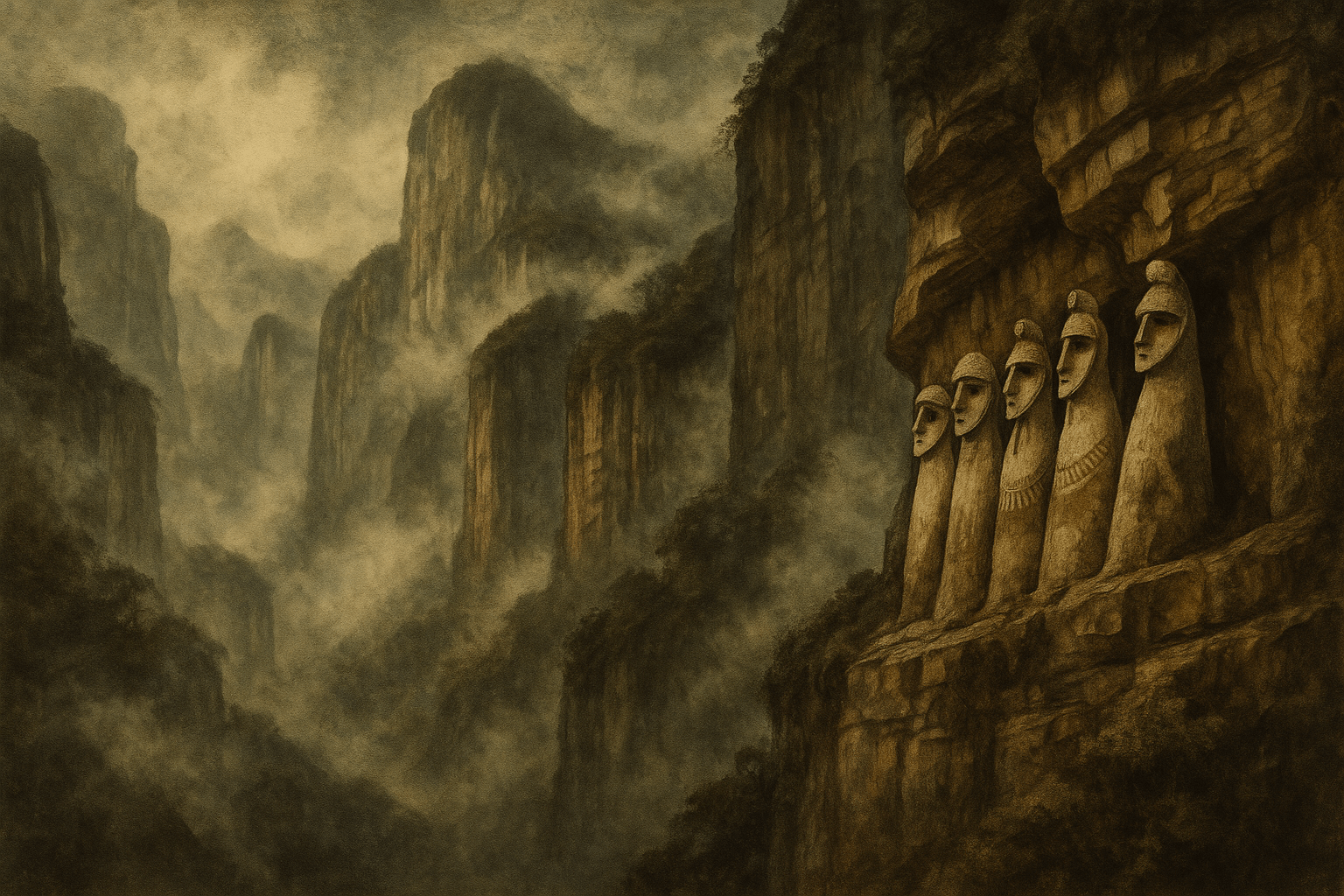Who Were the Chachapoya?
The Chachapoya civilization flourished from approximately 800 AD until their conquest by the Inca Empire in the late 15th century. They were not a unified empire but a confederation of different chiefdoms, bound by a common culture and language, which is now lost. Their territory was a challenging one—a dramatic landscape of deep canyons, dense cloud forests, and high-altitude grasslands. This very environment shaped their culture, making them skilled builders, farmers who mastered terraced agriculture, and notoriously fierce warriors.
Early Spanish chroniclers, recounting Inca lore, described the Chachapoya as being taller and fairer-skinned than other peoples of the Andes. While these accounts are likely exaggerated, they hint that the Chachapoya were a distinct ethnic group, fiercely protective of their identity and their mountainous domain. Their true name for themselves is unknown, lost to time after the successive disruptions of the Inca and Spanish conquests.
Masters of Stone: Kuélap and Funerary Architecture
The most spectacular testament to Chachapoya engineering and social organization is the fortified citadel of Kuélap. Perched atop a 3,000-meter-high limestone ridge overlooking the Utcubamba Valley, Kuélap is a colossal achievement. Its outer walls soar up to 20 meters in height, constructed from massive limestone blocks. To put its scale into perspective, the volume of stone used to build Kuélap is estimated to be three times that of the Great Pyramid of Giza.
Inside these formidable walls, the Chachapoya built over 400 circular stone structures, many decorated with zigzag and rhomboid friezes that are a hallmark of their architectural style. These were likely homes, storehouses, and ceremonial buildings. But Kuélap was not just a city; it was a fortress, with narrow, funnel-like entryways designed to be easily defended against intruders. It stands as a powerful symbol of their autonomy and strength, a fortress in the clouds that protected thousands.
Just as distinctive as their fortresses were their methods for honoring the dead. The Chachapoya practiced two primary forms of burial, both dramatically placed on sheer, inaccessible cliffs:
- Sarcophagi (Purunmachus): At sites like Karajía, the Chachapoya interred their elite in large, anthropomorphic coffins. These capsules, made of clay, sticks, and grass, were sculpted to resemble human figures with prominent, V-shaped jaws. Painted in white and ochre, they stand in silent rows on narrow ledges hundreds of feet in the air, eternally watching over the valleys below. Each sarcophagus contained a mummified individual, seated in the fetal position.
- Chullpas (Mausoleums): At other sites, such as Revash, the Chachapoya built small, house-like mausoleums directly into the cliff faces. These stone “houses of the dead” were often decorated with geometric paintings and housed the mummified remains of multiple individuals, likely entire family groups.
This practice of high-altitude burial was more than just a tradition; it was a statement. By placing their ancestors in such prominent, commanding positions, the Chachapoya ensured that the spirits of their dead would remain guardians of the living, their presence perpetually felt by the communities below.
The Cloud Warriors vs. the Sun Empire
For centuries, the Chachapoya’s mountain strongholds kept them safe. But in the mid-15th century, they faced their greatest threat: the inexorable expansion of the Inca Empire. The Inca, masters of the highlands to the south, viewed the Chachapoya territory as a vital prize, a gateway to the Amazon and its resources.
The conquest, led by the Inca Emperor Tupac Inca Yupanqui, was a long, brutal, and costly affair. The Chachapoya’s loose confederation of chiefdoms proved difficult to defeat in a single blow, and their expert knowledge of the rugged terrain gave them a significant defensive advantage. They fiercely resisted the Inca onslaught, launching guerilla-style attacks from their mountain fortresses. Chronicles state that the Inca suffered heavy losses and that the campaign to subdue the “Cloud Warriors” was one of the most difficult in their empire’s history.
Ultimately, the superior numbers, organization, and logistical prowess of the Inca army prevailed. After years of fighting, the Chachapoya were subjugated. True to their administrative style, the Inca implemented a policy of mitma—forcibly relocating entire Chachapoya communities to distant parts of the empire to break their power and quell rebellion. Ironically, the fighting skill of the Chachapoya was so respected that many were conscripted to serve as the personal bodyguards of the Sapa Inca himself in Cusco.
The Final Mystery: Disappearance and Legacy
The Inca conquest marked the beginning of the end for the Chachapoya culture, but it was not the final blow. When the Spanish conquistadors arrived in the 1530s, the Chachapoya, eager to throw off the Inca yoke, quickly allied with the European invaders. They provided valuable assistance to the Spanish in their fight against the Inca forces.
This alliance, however, proved catastrophic. The true conquerors were not swords and arquebuses, but European diseases. Smallpox, measles, and influenza, to which the native populations had no immunity, swept through the Andes and decimated the Chachapoya. Their population, already fragmented by Inca rule and war, plummeted. By the 1700s, the Chachapoya as a distinct cultural group had effectively vanished, their language lost and their traditions absorbed or forgotten.
Today, the Chachapoya exist as a profound historical mystery. While their monumental ruins and cliff-side sarcophagi speak of their power and ingenuity, the details of their daily life, their beliefs, and their language remain largely shrouded in the same mists that cover their homeland. They are the silent warriors of the clouds, whose legacy is written in stone on the precipices of the Peruvian Andes, a haunting reminder of a world that has been lost.
